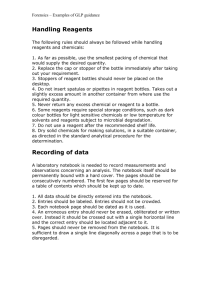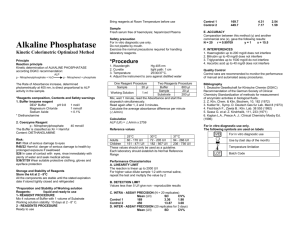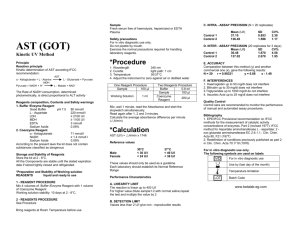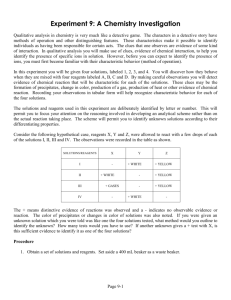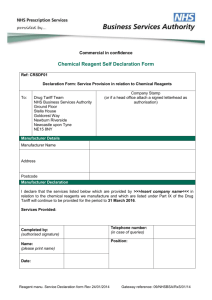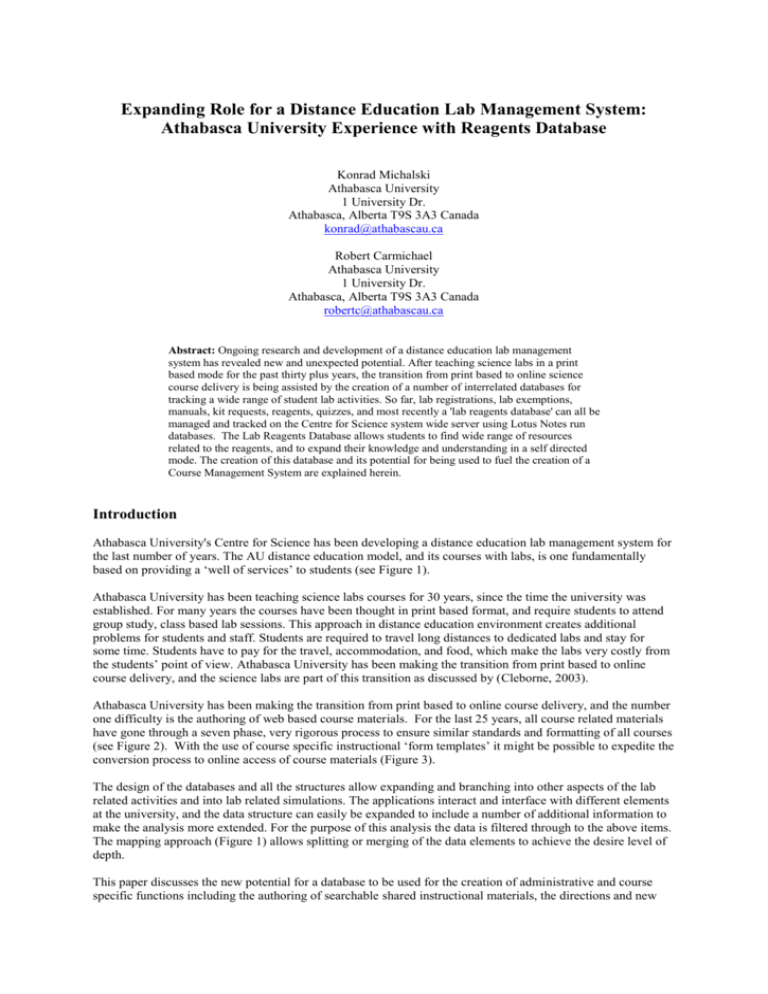
Expanding Role for a Distance Education Lab Management System:
Athabasca University Experience with Reagents Database
Konrad Michalski
Athabasca University
1 University Dr.
Athabasca, Alberta T9S 3A3 Canada
konrad@athabascau.ca
Robert Carmichael
Athabasca University
1 University Dr.
Athabasca, Alberta T9S 3A3 Canada
robertc@athabascau.ca
Abstract: Ongoing research and development of a distance education lab management
system has revealed new and unexpected potential. After teaching science labs in a print
based mode for the past thirty plus years, the transition from print based to online science
course delivery is being assisted by the creation of a number of interrelated databases for
tracking a wide range of student lab activities. So far, lab registrations, lab exemptions,
manuals, kit requests, reagents, quizzes, and most recently a 'lab reagents database' can all be
managed and tracked on the Centre for Science system wide server using Lotus Notes run
databases. The Lab Reagents Database allows students to find wide range of resources
related to the reagents, and to expand their knowledge and understanding in a self directed
mode. The creation of this database and its potential for being used to fuel the creation of a
Course Management System are explained herein.
Introduction
Athabasca University's Centre for Science has been developing a distance education lab management system for
the last number of years. The AU distance education model, and its courses with labs, is one fundamentally
based on providing a ‘well of services’ to students (see Figure 1).
Athabasca University has been teaching science labs courses for 30 years, since the time the university was
established. For many years the courses have been thought in print based format, and require students to attend
group study, class based lab sessions. This approach in distance education environment creates additional
problems for students and staff. Students are required to travel long distances to dedicated labs and stay for
some time. Students have to pay for the travel, accommodation, and food, which make the labs very costly from
the students’ point of view. Athabasca University has been making the transition from print based to online
course delivery, and the science labs are part of this transition as discussed by (Cleborne, 2003).
Athabasca University has been making the transition from print based to online course delivery, and the number
one difficulty is the authoring of web based course materials. For the last 25 years, all course related materials
have gone through a seven phase, very rigorous process to ensure similar standards and formatting of all courses
(see Figure 2). With the use of course specific instructional ‘form templates’ it might be possible to expedite the
conversion process to online access of course materials (Figure 3).
The design of the databases and all the structures allow expanding and branching into other aspects of the lab
related activities and into lab related simulations. The applications interact and interface with different elements
at the university, and the data structure can easily be expanded to include a number of additional information to
make the analysis more extended. For the purpose of this analysis the data is filtered through to the above items.
The mapping approach (Figure 1) allows splitting or merging of the data elements to achieve the desire level of
depth.
This paper discusses the new potential for a database to be used for the creation of administrative and course
specific functions including the authoring of searchable shared instructional materials, the directions and new
approaches to the online based labs, and how the labs elements can be taught or assisted by online education as
discussed by (Tobin, 1993). At the same time this paper addresses “six major aspects that affect the planning of
any laboratory work for students” as mentioned by (Holmberg, Bakshi,, 1982).
AU Student
AU Office of the
Registrar
Lab Exemptions
AU Library
Science
Professors/Tutors
Lab Bookings
AU Educational
Media Develop.
Home Lab Kit
Requests
Lab Coordinator
Lab Manuals and
Glossaries
Science OH&S
Committee
Specific Lab Course
Reagents
Lab Quizzes
AU Facilities
Lab Staff
Chemical and Equip.
Inventory
Lab Purchasing
Fire Department
Figure 1: Schematic Diagram of Athabasca University Science ‘Database Well’ of Applications and Access
Phase 1:
Long-Range
Strategic Planning
and Approvals
Database Phase 4a:
Phase 5:
Form Design
Course Material
Production/Stocking,
Delivery and
Tutoring
Phase 2:
Program Planning:
Course Level, and
Course Relationships
Phase 3:
Course Planning for
Development and
Delivery
Database Phase 4b:
Phase 6:
Content Insertion and
Authoring
Evaluation of
Teaching
Effectiveness –
Questionnaire
Development
Database Phase 4c:
Phase 7:
Phase 4:
Online Conversion
(Students / Read
Only)
Course Revision
Procedure
Course Materials
Preparation
Figure 2: Seven Phases of Print Based Course
Development at Athabasca University
Figure 3: ”Form / Template” approach to the course
materials preparation.
Database Form Creation, Functionality and Integrity
Teaching labs in a distance education environment, online, presents a big challenge and there are several models
that have been used by distance education institutions (University of Maryland, 1997). There are other elements
that will come in the near future as described by (Howard University, 1994). There is more and more simulation
software being developed and available online, and it looks like this will be the future of the distance education
environment (Model Science Software Inc, 2005). Another approach is to have a video on line and live lab
experiments transmitted to students as described by (Erdélyi, Hoefkens, Makino, & Berz, 2002).
This paper describes the steps leading in the directions that have been successful. The blank reagents database
form was created initially using web page design software (Macromedia Dreamweaver) and converted to the
Lotus Notes form. The form contains a number of related reagent fields that are grouped in separate sections,
including physical properties, hazards, preparation instructions, inventory, and even purchasing related
information. Each reagent record is created using a separate blank form (Figure 4) and various types of
information (e.g., word.doc, jpeg, mpeg, .and PDF files etc.) can be attached to the record. Reagent records can
easily be sorted by lab course, and new reagent records can easily be added or removed as experiments are
changed within each course.
Figure 4: Blank Reagent Form (top and bottom portions of the form on left and right respectively
After the reagent record has been constructed, the database can be put through a conversion process (see next
section) making it “read only” for student use. Currently the Reagent Database contains 439 reagents used in 10
different lab courses (Figure 5). The data analysis of our student body taking science labs will allow us to
become more focused and precisely target our student population like described by (Minaei-Bidgoli, 2004). We
are in the process of defining the specs of our labs in the distance education environment and evaluating the
elements that can be accomplished as described by (Perrin, 2002). The reagents are a part of this process.
Figure 5: Course Specific List of Reagents and Lab Reagents Database Statistics
The creation of individual reagent records is quick and easy once the reagent blank form has been created. The
course content manager/administrator loads the data on the secure server on the Internet. The access is password
protected and allows the content creator to do the editing functions like creating new records, modifying the
existing ones, or deleting existing ones. The author can attach all types of files, e.g. jpeg, pdf, movies, etc.
Also course specific information can be attached to each reagent and these are readily found and extracted from
the database of all reagents. It allows students to get extended information related to the course specific reagents
using not only the database, but also other interconnected web based resources. Athabasca University has been
trying to provide much more flexible environment for students as described by (Yaron, 2003), and at the same
time allows them to do that remotely.
The functionality of Lotus Notes allows indexing the content of the attached files so the search function also
searched through the attached files and finds the search criteria that are inside of the attached files. This is very
powerful feature that allows searching not only the displayed text but also the attachments.
Lotus Notes keeps the entire database as one file, this makes the management of the entire database very simple.
Instead of having to manage thousands of individual files located on the Internet web site, the manager manages
one file. Once they are established, all the links within the file are never broken, and moving the file around is
not causing any breaks in links. Database updating can readily occur following major and/or minor changes to
an accredited course. Policies for major and minor changes to the course databases have been established, and
are being followed with the appropriate approvals sought before changes are posted in student view. Our
database enhances the teaching experience in a distance environment and also, as stated by (Forinash, Wisman,
2001) “Web-based delivery offers a means to conveniently package a complete laboratory”.
Database Form Conversion Process for Educational Purposes
The public (student) version is made by creating a copy of the entire database, and next modifying the new copy
for public access and viewing (Figure 6).
Content Management System
Lab Content
Management System
Lab Content
Presentation
Conversion
Process
Loading the data
Records created on secure
server side of course
materials access, in fully
editable author only mode
Student View
Turn all record fields
to Read Only
on public side of course
materials access
Figure 6: Lab Content Management System
The conversion process is a simple one, and requires only a couple of minutes to make the public version. The
form is simply made “read-only”, so the viewers cannot make any changes. This is basically achieved by
clicking and the check-box and making the record “read-only” (Figure 7 and 8). The form can be displayed in an
edit mode that allows the content managers to easily enter or edit the content. The visibility of the sections of
the form depends on the application. Some parts can be made visible for students, some for course coordinators
and tutors, and some for the administrative staff (inventory, purchasing information).
Figure 7: Setting up “read-only” access to the
form. Some parts of the form are made invisible to
the users (students) by highlighting the sections on
the form and checking a box to make them
invisible.
Figure 8: Setting up parts of the form to be not visible
to some users. The entire process takes only a few
minutes.
Pedagogical Views and Functions
Currently the Science Lab Reagents Database is accessed by biology and chemistry students. Students now can
see all the reagents used in a course online, and can prepare for a laboratory session at home. Students can
access this database at any time search and find the physical properties for the many reagents used in our science
lab courses. Most importantly MSDS and lab safety information is attached to each record (Figure 9). The file
attachment functionality allows having additional multimedia properties associated with the record, all very
easily managed by the course manager. The reagents database contains a warehouse like repository of all
reagents in a database format, and it allows analyzing different aspect of the teaching and learning processes in
order to improve them as described by (Flies, 2001).
Figure 9: Author View (right) versus Student View (left) of an individual reagent record
All records (reagents) related to the specific course are selected from the database and displayed on demand.
This selection process can be applied to select other subsets of information from the database. Not only different
subsets can be selected from the database, but also different sections of the form can be displayed for different
applications and different users. It makes this application very flexible and at the same time easy to design and
manage.
Course Content Synthesis
The creation and successful use of the Lab Reagents Database has led to the exploration of its potential for being
used as a basis for a Course Management System. – Student Course Materials -Study Guides, Assignment, Lab
Manuals, etc.
A generic blank form (Figure 10) can be used for many other educational applications like study guides,
manuals, lab manuals, etc. Figure 11 shows a form in edit mode loaded with the lab manual.
Figure 10. Blank Form in “Edit” mode
Figure 11. Loaded with data form in “Edit” mode
The lab manual table of content (Figure 12) allows expanding and collapsing all the relevant headings. The
search function (button) allows to search through all pages and attachments. Figure 13 shows the lab manual
table of content in Lotus Notes view.
Figure 12. Table of Content (TOC) view – Lotus
Notes
Figure 13. Table of Content - Web view
The entire stepwise process of entering the lab manual data into the form and publishing on the web is presented
in Figures 10-13. Athabasca University has been trying to enrich the students’ experience by making courses
and labs available in different media. “University gain significant educational enhancement from the
development and inclusion of multimedia based learning resources when coupled with traditional print based
materials.” as stated by (Bowyer, Blanchard, 2003).
Conclusions
A Lotus Notes database has fulfilled our expectation in terms of form properties, design, flexibility, and
conversion to student multiple end uses. The database allows for sharing the information for collaboration, and
in the distance education this feature is important as stated in (Forinash, Wisman, 2001). The database approach
enhances the distance education lab delivery and more students will enroll as stated by (Carter, Holmberg,
Liston, 1998). Athabasca University is also getting more into the remote access to the lab experiments
(Kennepohl, Baran, Connors, Quigley, Currie, November - 2005) and in the future this seems to be the way to
proceed for some courses and lab elements.
Form properties
The most important property of the database form for our purposes is the easiness to set it up for “read-only” or
“edit” mode. In the edit mode the form works as data entry for all the course lab content and allows the course
manager to enter all the required information. Once this process is completed the form can be made “read-only”
and not editable. The conversion is as simple as a mouse-click process (Figures 7 and 8)
Form design
The form may contain a number of different sections related to different aspects of the reagents. E.g. properties,
inventory, purchasing information, etc. It is very easy to add new sections and expend the form.
The sections can be easily hidden during the conversion process and make invisible to the users like students
(Figure 8). The content manager makes sure the information is correct, and after that the conversion simply
makes sure what is visible and want not. Our examples talk about conversion so student can see it, but it can
also be converted for other purposes (inventory, purchasing, etc.). The customization can be done for different:
-
Purposes (academic, administrative)
Applications (academic, inventory, purchasing)
Different users (Students, coordinators, tutors, administration)
Customization flexibility - educational and other applications
The flexibility of this approach has already been used at Athabasca University for other applications:
- Glossary of terms. The database allows to have glossary of terms that go across different courses, and
they can be reused for other purposes (not only course related)
- Lab exemptions. Presently are used for only few courses, but they can be expanded for all the courses
and used for other purposes.
- Course content. We have created a course materials system that goes 3-levels deep and allows to have
courses materials loaded into forms by; chapter, unit, section (3 levels), and the system automatically
creates the course related table of content.
- Lab Registrations. They are used for registering students in the lab, but the concept parent-child records
can be applied to other purposes.
References
Bowyer, P. K., Blanchard, C. L., (2003). Multimedia based enhancement of the science of oenology in the
distance education learning environment, Australian Journal of Educational Technology 2003, 19(3), 323-338.
Carter, L., Holmberg, R., Liston, M. (1998). Athabasca University’s Achievements in Science Education, 14th
Annual Conference CADE – The Canadian Association for Distance Education 1998, Volume 1, pp. 57-58.
Cleborne, D., Maddux, Jacque Ewing-Taylor, D. Lamont, Johnson. (2003). Distance Education: Issues and
Concerns (pp. 188-189), Haworth Press.
Erdélyi, B., Hoefkens, J., Makino, K., & Berz, M., (2002). Distance Education in Beam Physics, Department of
Physics and Astronomy and National Superconducting Cyclotron Laboratory, Michigan State University, MI
48824, USA.
Flies, D. (2001). Designing & Implementing a Classroom Data Warehouse. Proceedings MICS 2001.
Forinash, K., Wisman, R., (2001). The Viability of Distance Education Science Laboratories, The Journal
http://www.thejournal.com/articles/15590 , September 2001.
Holmberg, R., G., Bakshi, T., S., (1982). Laboratory Work in Distance Education, Distance Education, Distance
Education, Volume 3, Number 2, 1982.
Holmberg, R., G., Liston, M., L., (1998). Home Lab Activities for Introductory Biology Delivered At-ADistance, Tested Studies for Laboratory Teaching, Proceedings of the 19 th Workshop/Conference of the
Association for Biology Laboratory Education (ABLE), Volume 19, ISBN 1-890444-01-4 (pp. 362-365).
Howard University, Digital Learning Lab, http://www.dll.org/ . Copyright © 1994, All rights reserved.
Kennepohl, D., Baran, J., Connors, M., Quigley, K., Currie, R. (November - 2005). Remote Access to
Instrumental Analysis for Distance Education in Science, International Review of Research in Open and
Distance Learning, ISSN: 1492-3831.
Minaei-Bidgoli, B., Kashy, B. D. A., Kortemeyer, G., and Punch, W. (2003). Predicting Student Performance:
an Application of Data Mining Methods with an Educational Web-Based System (LON-CAPA), Frontiers in
Education Conference 2003.
Model Science Software Inc., http://modelscience.com/. Copyright © 2005 Model Science Software Inc. All
Rights Reserved.
Perrin, E., C. (2002). Evaluation of Science and Technology Education at the Dawn of a New Millennium,
Springer.
Tobin, K. (1993). The Practice of Constructivism in Science Education. Lawrence Erlbaum Associates
University of Maryland, Institute for Distance Education. http://www.umuc.edu/ide/modlmenu.html#lab.
Copyright © 1997, All rights reserved.
Yaron, D., Evans, K.L., Michael Karabinos, M., (2000). Scenes and Labs Supporting Online Chemistry, Paper
Presented at the 83rd Annual AERA National Conference, April 2003.

